Frank Lloyd Wright Furniture Style
Discover all about the Frank Lloyd Wright furniture style, including what it is, its characteristics, what materials it’s made of, and the wood types used for this furniture design.
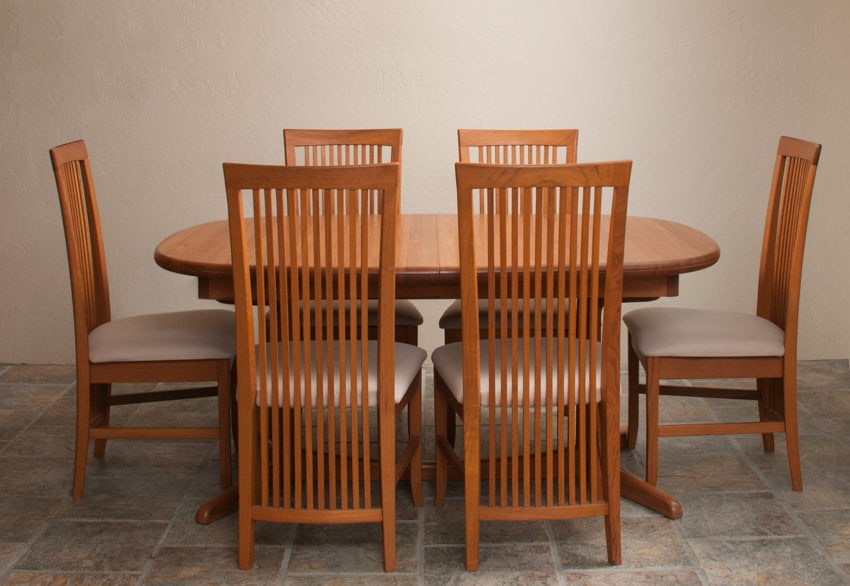 Throughout his nearly 70-year career, the prolific and well-respected architect Frank Lloyd Wright designed more than a thousand different buildings and other structures. Wright’s contribution to the furniture and interior design world is less well recognized, even though his architectural achievements are generally celebrated.
Throughout his nearly 70-year career, the prolific and well-respected architect Frank Lloyd Wright designed more than a thousand different buildings and other structures. Wright’s contribution to the furniture and interior design world is less well recognized, even though his architectural achievements are generally celebrated.
The architect believed the furnishings and interior design had a significant role in the work’s overall aesthetic. It was rumored that he was concerned about his creations being ruined by objects that did not go together well.
Wright would go on to design nearly 1,100 different pieces of furniture throughout his career, many of which continue to bring in a significant amount of money when offered for auction today.
What Is Frank Lloyd Wright Style Furniture
Frank Lloyd Wright style furniture refers to furniture designs that were created by the American architect Frank Lloyd Wright or inspired by his design principles.
Wright was known for his organic architecture, which emphasized the use of natural materials and sought to harmonize his buildings with their surroundings.
Some common features of Frank Lloyd Wright style furniture include:
- Exquisite craftsmanship and quality
- Made from natural materials such as wood, stone, and glass
- Simple geometric forms & clean lines
- An emphasis on functionality and practicality
- A focus on integrating the furniture with the surrounding space
- Low-profile design
Frank Lloyd Wright began his architecture career in Chicago in the 1880s, even though he was born in Wisconsin in 1867. Beginning his career as an employee of Adler & Sullivan, he first gained professional experience in the field. Wright launched his architecture practice in 1893 after rapidly rising through the ranks to become Sullivan’s chief assistant.
In the twenty years that followed, Frank Lloyd Wright grew in popularity as one of the architects who pioneered the “Prairie Style” of architecture. During this time, Wright designed some of the most prominent residences and buildings in the Midwestern United States.
The Prairie Style was revolutionary in terms of modern home construction. It is because it made use of cost-effective, mass-produced materials that were traditionally reserved for commercial buildings. This style is known for its large living areas, continuous open spaces, and low-sloped roof designs.
Frank Lloyd Wright’s interests extended beyond building from the beginning of his professional career. Wright’s goal was to create “whole works of art” out of each of his prairie homes by carefully curating every detail, from the furniture and lighting to the artwork and floor coverings.
In the 1890s, when Wright was working on the design of his own house in Oak Park, Illinois, he most likely began experimenting with furniture making at about the same time.
Wright’s furniture design was known for built-in window seats, theatrical types of dining table, and high-backed chairs. They were some of the revolutionary design elements included. This made the home stand out compared to other homes at the time.
Decorative Objects: There was more to Wright’s works than just furniture like tables and chairs and more essential things. In addition to constructing unique lighting fixtures, windows and glass pieces, floor coverings, and decorative art pieces of a more miniature scale, the architect was also well-known.
It was well known that Wright would obsess over every aspect of a project, right down to the flower vases he would place on his tables and the murals he would hang on his walls.
Copper Urn and Decorative “Weed Holder” Vase are two of his prominent decorative pieces. Both of these pieces are preserved at his Oak Park Studio. The copper urn is one of his more notable decorative pieces.
Prairie Style Furniture Characteristics
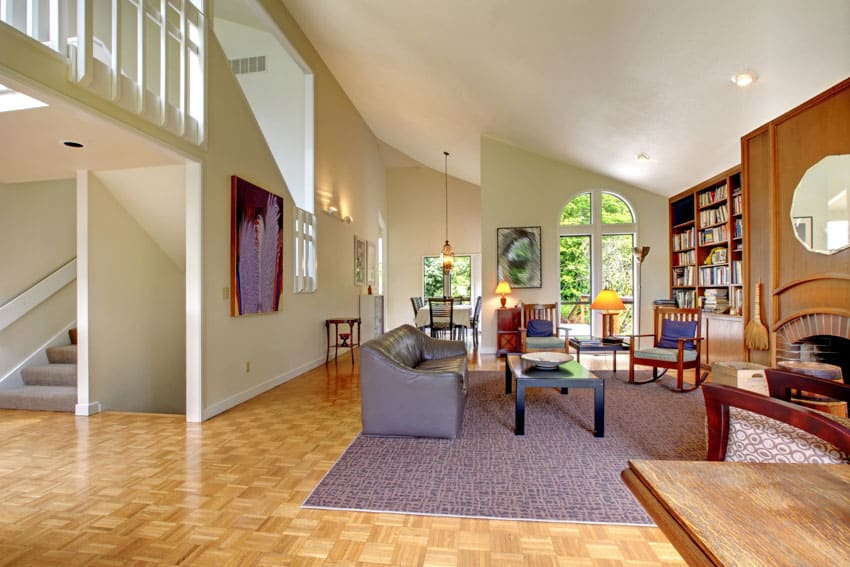
Although they were manufactured at the time, they were not particularly well received by the general public. The pieces produced in bulk quantities and sold under the brand name Taliesin Ensemble have now become highly sought after by collectors.
Whether through plenty of his original works or the many modern types of furniture styles produced in conjunction with his estate, the style and influence of Frank Lloyd Wright’s furniture will continue to be preserved for its important place in history. Whether his original works are preserved or the modern furniture lines will be the case.
The dozens of Prairie Style residences that Wright created between 1900 and 1920 brought him most of his fame. He called them “the city man’s country home on the prairie” when he talked about them. During a period of urban turmoil, they appealed to upper-middle-class homeowners since they were very different from the typical Victorian residences built during that time.
The term “organic architecture” was coined by Frank Lloyd Wright. It referred to structures in tune with the people who lived in them and the natural surroundings, which helped propel Wright to the forefront of the architectural world. The audacity and fertility of his inventions and his mastery of space are his crowning achievements.
Frank Lloyd Wright used a wide array of building materials to establish a long-term and harmonious coexistence with nature in his designs for organic architecture. Wright frequently used materials such as reinforced concrete, precast concrete blocks, glass bricks, and zinc canes for the windows of headlights, as well as locally available materials such as stone and unpainted wood.
The prominence of American architecture is primarily attributed to Frank Lloyd Wright. The natural world significantly impacted his imaginative works, and he placed a premium on handiwork. This was made apparent as he embraced technology’s capacity to commercialize his design and make it available to more people.
It is commonly believed that Frank Lloyd Wright’s favorite shade of red was called “Cherokee Red.” Cypress was a type of wood that Wright had a solid connection to on a personal level. Consequently, following Willey, it became the preferred specification for many of his Usonian homes.
What Is Organic Architecture?
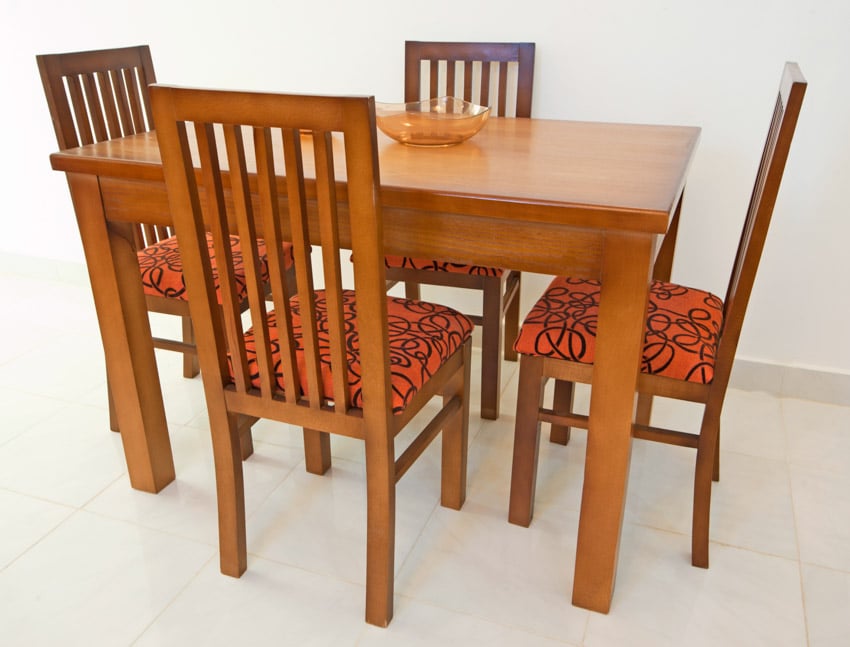
The aspect that most defines them is that they place more importance on the horizontal rather than the vertical. They are spaced out throughout their respective lots. They have either flat or shallowly hipped roof lines, rows of windows, overhanging eaves, and horizontal bands of stone, wood, or brick across the surface.
The Prairie style emphasized built-in shelving, cupboards, and closets contained in single-story buildings that followed the long, low horizon of the prairie. This type of architecture was popular in the United States throughout the early 20th century.
Through his works and the hundreds of apprentices he mentored at the Taliesin Fellowship, Wright significantly influenced the architectural developments that occurred over the twentieth century. Wright’s design theory, which he referred to as “organic architecture,” centered on the idea that buildings should be created to be in harmony with people and their surroundings.
Do the Design Elements Belong to Mid Century Modern Interior Design Style?
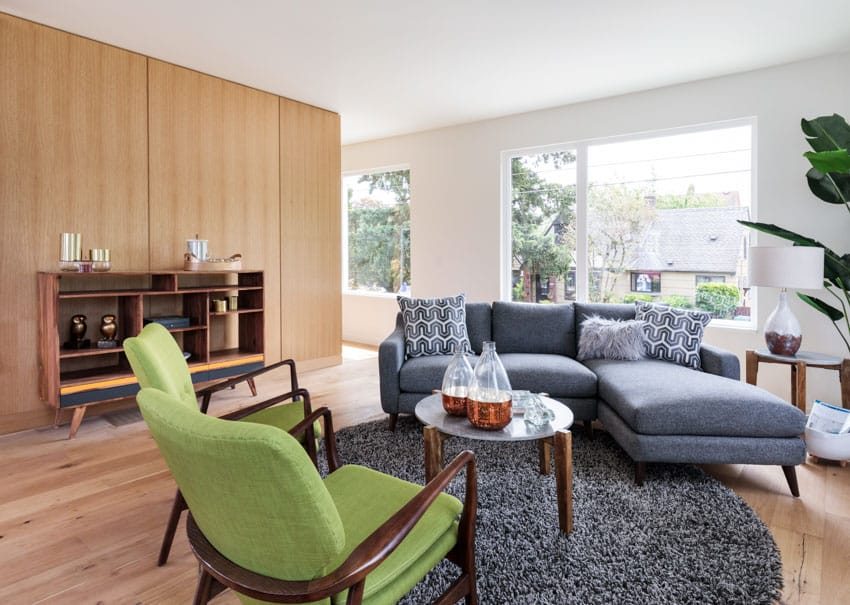
What Is the Wright Furniture Made Of?
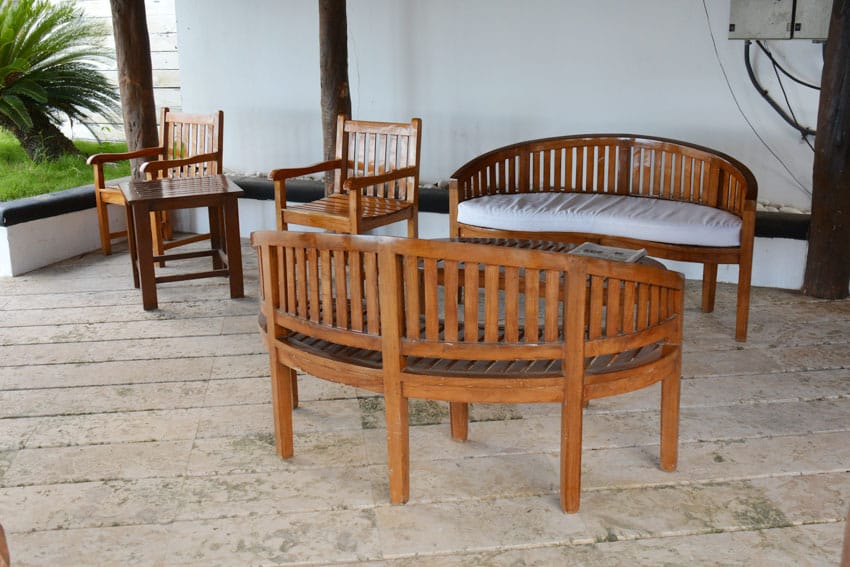
Birch wood: Birch is a popular choice for Frank Lloyd Wright furniture style pieces because it has a beautiful grain, is generally free of knots, and accepts stains and other finishes exceptionally well. The quality of Birchwood enables artisans and a wide variety of designers to elaborately construct designs that are more exquisite and will last longer.
Cypress wood: This material is a highly long-lasting and stable type of wood that is somewhat hard, robust, and resistant to rot. Because of this combination, it is an excellent option for use as outdoor furniture. Golden undertones give cypress wood a warm and welcoming appearance, which contributes to the material’s overall appeal.
Oak wood: The use of oak in furniture construction is highly recommended. Oak is a beautiful and versatile natural material that is hardy, long-lasting, and resistant to daily life’s everyday wear and tear. It also offers a robust and durable construction material.
Iridized glass: Iridescence is a weathering phenomenon that is typical of glass. It occurs when several fragile, translucent deterioration layers on the surface of an object interact with the passage of ambient light to produce a shimmering, iridescent look.
Sterling silver: If you take the necessary precautions, furniture made of high-quality sterling silver can last a lifetime. Even though it may eventually become tarnished, keeping your Frank Lloyd Wright furniture style pieces clean and regularly polishing them will ensure they look as good as new. Maintaining your sterling silver luster requires simple, consistent cleaning with a soft cloth and a light soap.
Other materials used for Frank Lloyd Wright furniture pieces are:
- Steel
- Painted metal
- Painted wood
What Kind of Wood Did Wright Use?
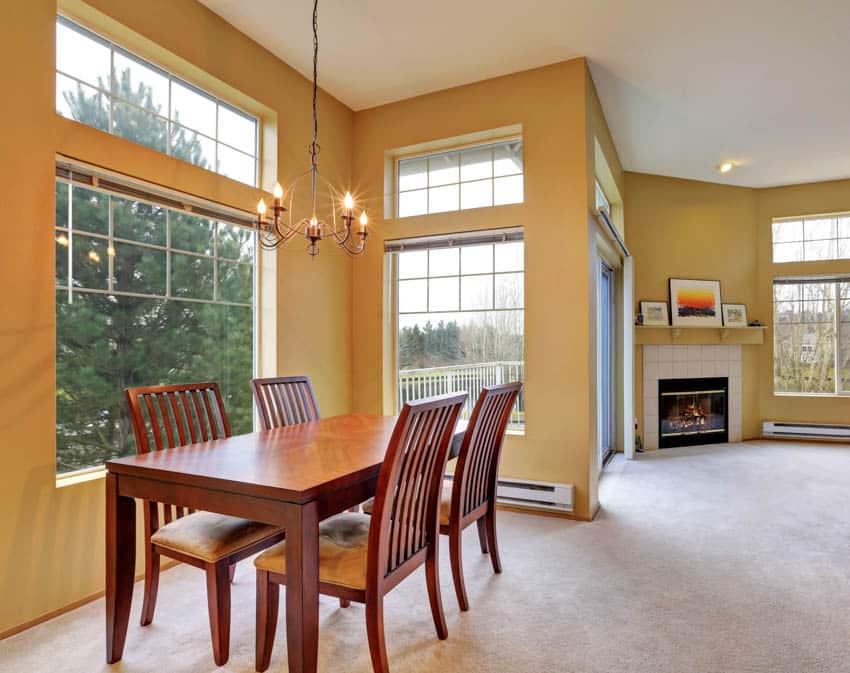
Why? Because cypress trees thrive in moist, swampy environments and provide beautiful wood. Cypress wood is characterized by its light hue and the low number of knots. Cypress is simple to work with due to its softness despite its strength and high level of durability.
It sands easily and readily accepts finishes. The heartwood of a cypress tree contains a preservation oil, which gives the tree a natural resistance to insects, rot, decay, and the elements. Because of this, it is an excellent choice for the construction of wooden patio Frank Lloyd Wright furniture style pieces.
Wright Mission Style Furniture
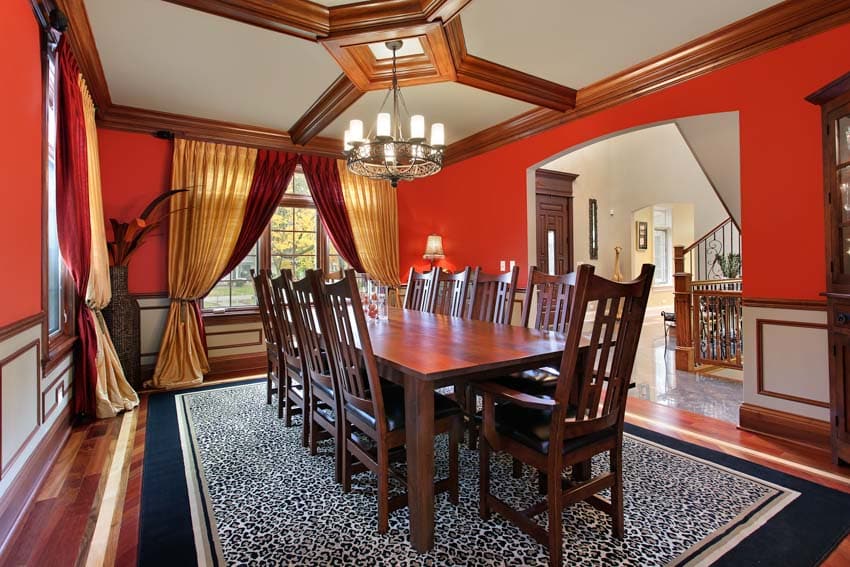
The furniture known as the Mission style is characterized by its use of rectangular shapes and an emphasis on high-quality handcraftsmanship. It employs horizontal and vertical lines that are completely straight. Mission style furniture is characterized by sharp angles of exactly ninety degrees and straightforward, simple designs.
The grain of the wood is highlighted by using a medium or dark stain, typically used in constructing this furniture. The gorgeous, classic look you get from a structure is most often the result of having robust and hefty furniture. The majority of the time, ornamentation is not included in mission-style furniture. If it is, it is very subtle and uncomplicated.
The Wright Chair

The austerity of Japanese design and the work of American artisans such as Gustav Stickley motivated him when developing their look. As his career progressed, Wright started experimenting with more futuristic and streamlined aesthetics. The ideas he came up with served as a precursor to the minimalist furniture design that is popular today.
Frank Lloyd Wright was commissioned to construct a new home in Highland Park, Illinois, by manufacturer Ward Winfield Willits (1859–1950) in 1900. Today, the house and all of the furnishings that complement it are acknowledged as Wright’s first residential masterpiece in the Prairie School style.
In particular, he had a chair that was created to be a component of the set used in the dining room. This chair had an essential role in the overall architectural design. The environment that Wright devised for formal eating consisted of chairs with high backs arranged around a large table, which he considered acceptable.
The high-back chair was a style he exploited to create a different, almost sanctified place within the dining room. He began using this form in 1895, long before C.R. Mackintosh came up with similar designs. Wright attached great significance to the rituals that families participated in and paid careful attention to the symbolic meanings of the buildings he designed.
The Wright Table

It was during this time that Wright was also designing furniture. These tables were like the early high-backed chairs he became famous for designing and had many of the same characteristics.
Wright would develop noteworthy tables in various designs, from classic oak dining tables to more contemporary office desks and consoles. He made it a point to collaborate with several partners along the way.
These tables include traditional oak dining tables to contemporary office desks and consoles. One particularly notable example is the Frederick C. Robie House dining room, which is located in Chicago. There, Wright masterfully blended a large wooden dining table with glass lighting bulbs hung on the ceiling to create a warm and inviting atmosphere for the entire room.
A classic long tabletop designed by Frank Lloyd Wright looks to float almost effortlessly above the four solid legs. The cabinet block in the middle of the table appears to be suspended from the top.
Wright developed handholds in the form of simple cutouts for the cabinet doors rather than handles that were attached to the doors. His work combines strong structures with unexpected slices of negative space to create exciting compositions. The overall impression is of a solid yet airy table that blends perfectly with its surroundings.
Wright’s Heaviest Contributions
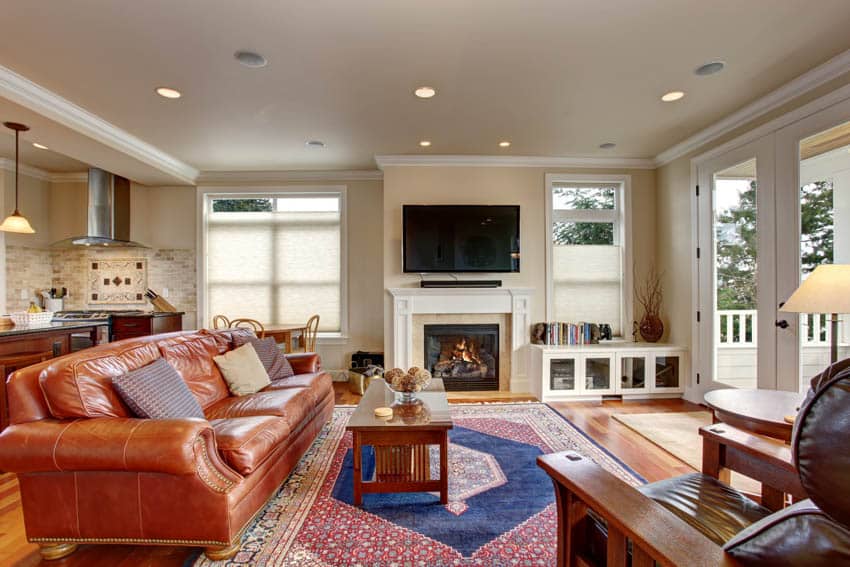
• He really was a pioneer in the field of sustainability: His lifelong fascination with the connection of what humans produce to the natural environment and to the greater ecology of sites in varied locations is of enormous reality. He has spent his whole life studying this relationship.
This issue serves as the cornerstone around which contemporary sustainability is constructed. Long before daylighting and passive solar heating became popular, Wright faced the south-facing sides of his buildings toward the sun.
He also utilized passive cooling and building materials sourced locally (including wood harvested in an environmentally responsible manner). He designed his structures with dimensions that mirrored those of mass-produced materials to reduce the amount of waste produced during construction.
• He advocated for the design thinking methodology: Human-centered design is all the rage in Silicon Valley and other innovation areas worldwide. This refers to designing buildings, objects, and software with users in mind. Wright was one of the earliest advocates for this theory.
Mr. Wright made it a point to get to know every one of his customers. He was interested in better understanding their lives to pinpoint issues that needed attention. We currently live in an era with a deep appreciation for design on a fundamental level.
Wright was known for designing environments in their entirety, including the furniture, textiles, and accessories within them. He did this because he had a vision for how these places would appear and how people would use them.
Regarding design in today’s world, this is the topic that everyone discusses. Human considerations in engineering, how an object is used, and how we can make it more aesthetically pleasing and user-friendly. That was the primary focus of his constructions, and he was engaged in this endeavor a century ago.
• He made design accessible to everyone: The legacy of Frank Lloyd Wright is not only architectural but also social and political. There is no competition between the many infrastructures—electricity, water, sewerage, and air conditioning—necessary to operate buildings.
They are a component of a body that is entirely interrelated. That body is, in turn, a component of an even more comprehensive whole: the city or the suburb. Wright pushed us to stop thinking about buildings as separate entities and start considering them instead as a means of understanding the enormously complicated world we all live in.
That is the aspect of Frank Lloyd Wright that fascinates us the most. He went beyond the production of lovely boxes. He permitted us to think about architecture as a tool to change and improve the world.
See more related content in our article about shaker style furniture on this page.






